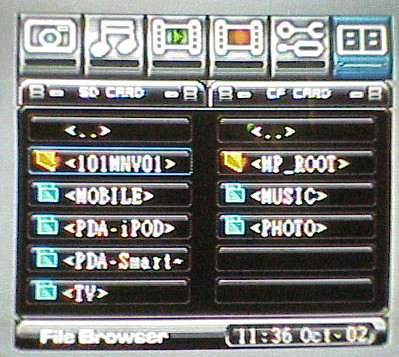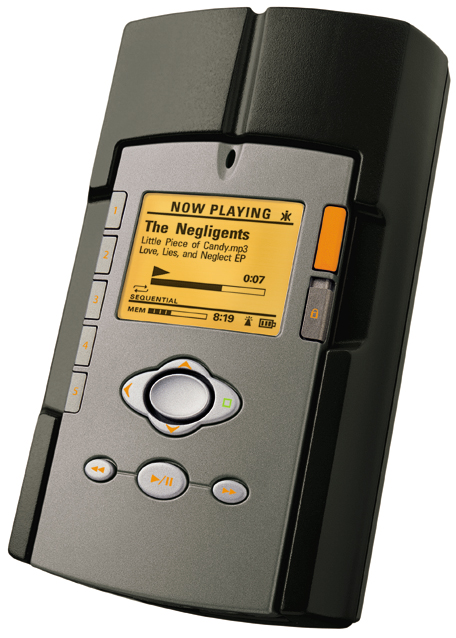

- #Neuros mpeg4 video recorder 2 movie
- #Neuros mpeg4 video recorder 2 upgrade
- #Neuros mpeg4 video recorder 2 portable
- #Neuros mpeg4 video recorder 2 Pc
In a few years, PVRs and set-top DVD recorders will probably include memory card slots, but until then this product is a convenient way to put video on your PSP or PDA without the complexity of PC video capture. On the whole, the Neuros MPEG-4 Video Recorder (both versions) is an interesting first entry in the new product category of “recording for mobile devices,” and there is clearly a lot of room for growth and improvement. But it gets the job done, and making recordings is simple enough. The on screen menus are somewhat ugly and feel clunky to me, especially in combination with the membrane click buttons on the remote. The recorder would be much more useful if it had all three memory formats in one box perhaps Neuros will do that in the

I have devices that use both Memory Stick and SD, and I suspect I’m not alone in that. Similarly, S-video support would be nice, and its omission seems odd for a device made in 2006.Īnother drawback of this product, from my perspective as a gadget lover, is the choice of supported memory formats. Not having proper A/V jacks on the box isn’t a dealbreaker, but it would be more useful if they were there. You have to use the provided cables, and there is no way to directly plug into devices (such as game consoles) that don’t have their own A/V jacks. The use of 1/8″ mini jacks for input and output is one example. But there a lot of small ways in which it falls short of perfection. The Neuros MPEG-4 Recorder 2 does exactly what it claims to: it is an easy way to record video to watch on a PSP. The “economic” and “normal” settings are probably not worth using at VGA resolution, as they have to cram four times as many pixels into almost the same amount of bandwidth as QVGA mode. The VGA recordings at “fine” and “super fine” quality are appropriate for TV playback or computer viewing. That resolution is meant to be used only with widescreen video, so the recorder trims off the edges of the input to remove the letterbox bars. One thing of note about the WQVGA clip is that the top and bottom are cropped.
#Neuros mpeg4 video recorder 2 movie
I wouldn’t recommend the “economic” setting for an action movie like the one the sample clip is from, but it should be adequate for normal television shows. Viewed on a PSP, there are visible artifacts in the QVGA and WQVGA clips but the “normal” quality is still quite watchable. This particular scene has a lot of movement in it, so it should be a good test of how well the Neuros’ encoder does under pressure. The following sample clips (all of the same 30 second scene) show the effects of the recorder’s resolution and quality settings. All values are based on various test clips I recorded while writing this review, and are estimated conservatively. The following table shows the average bit rate of each format, how many megabytes are required per minute of recording, and how much video will fit on a 1GB memory card. These affect video quality only audio is always recorded as 128 kbps AAC. The recorder has two quality levels for QVGA and WQVGA recording and four for VGA.


The PSP can’t play VGA recording (due to hardware limitations), but they should work well on high-end PDAs. Finally, the recorder can capture at VGA (640×480) resolution. The PSP’s wide screen is also supported with a WQVGA (368×208) option. QVGA recordings can be played directly on the PSP and should work without additional conversion on the iPod and most PDAs as well.
#Neuros mpeg4 video recorder 2 portable
If you record video to watch on a portable device, you will probably use the QVGA (320×200) resolution. The Neuros recorder captures video in several different resolutions and quality levels.
#Neuros mpeg4 video recorder 2 upgrade
Note that a firmware upgrade option is available, in case Neuros fixes bugs or improves the software. The music player supports MP3, AAC, and WMA formats but does not play protected (purchased) music files.įinally, if you have both supported memory cards, you can use the built in file manager to copy files back and forth. You can also use the recorder to display photos and play music from your memory card. The video player also supports DivX and Quicktime MPEG-4 files. You can, of course, play back the videos you record.


 0 kommentar(er)
0 kommentar(er)
